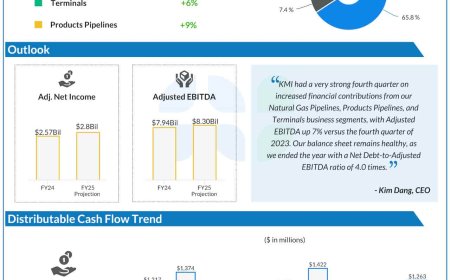How Taste Testing Drives Consumer Trust and Brand Loyalty?
The food and beverage industry is crowded with competition, and traditional marketing methods often fail to make a genuine impact on consumers. As brands strive to stand out, direct engagement with consumers becomes a powerful tool. Taste testing offers a unique opportunity to showcase products in a personal way, allowing consumers to experience them firsthand. […] The post How Taste Testing Drives Consumer Trust and Brand Loyalty? appeared first on Insights Success.

The food and beverage industry is crowded with competition, and traditional marketing methods often fail to make a genuine impact on consumers. As brands strive to stand out, direct engagement with consumers becomes a powerful tool. Taste testing offers a unique opportunity to showcase products in a personal way, allowing consumers to experience them firsthand. This approach fosters trust and loyalty, while also shaping consumer perceptions and influencing future purchasing decisions.
By allowing consumers to try products without the pressure to buy, brands create memorable experiences that stay with them. Well-planned sampling events offer an opportunity to leave a lasting impression and differentiate the brand. Feedback, word-of-mouth, and repeat interactions all contribute to long-term loyalty and a stronger connection with the audience.
Building Consumer Trust and Loyalty Through Taste Testing
When consumers try products through taste testing, it creates memorable experiences that resonate with them. Well-planned events leave a lasting impression and help the brand stand out. Over time, feedback, word-of-mouth, and repeat interactions naturally build brand loyalty.
Taste testing goes beyond simply offering a product to try. It builds consumer confidence by allowing them to form their own opinions and preferences without the pressure of having to buy. As they explore options, their trust in the brand grows, whether they discover new favorites or stick with what they know.
Creating Memorable Brand Experiences
Taste testing events turn regular product trials into fun experiences that stick with consumers. By creating a lively atmosphere and having knowledgeable staff, brands make tasting more than just sampling. These events allow participants to interact with products in exciting ways, sparking curiosity and building a sense of community around the brand.
A well-run tasting helps people explore flavors, textures, and scents, making the experience unforgettable. Planning these events carefully is key, from choosing the right setting to training staff to share their knowledge. Sharing stories about the brand adds depth to the experience, giving participants something to talk about and reasons to stay connected.
Encouraging Honest Feedback and Interaction
Taste testing gives brands real feedback, which is essential for improving products. Consumers share their thoughts and preferences, helping brands understand how people feel. This shows that customer opinions matter and makes consumers feel appreciated. These sessions not only reveal what people think about the product but also inspire changes to better meet customer needs.
How brands use this feedback helps build a stronger connection over time. It can lead to new ideas for flavors, packaging, and the overall experience. Taste testing also sparks a conversation that builds trust and deepens relationships between brands and consumers. When customers see their feedback lead to improvements, they become more loyal, creating long-lasting bonds that benefit both sides.
Harnessing Social Influence and Word-of-Mouth
Happy customers turn their tasting experiences into stories they share with friends and family. This word-of-mouth spread becomes a natural form of marketing. Talking about great flavors or fun events helps boost a brand’s visibility. Personal recommendations are powerful, as people trust what their friends or family say based on their own experiences.
When feedback spreads through social circles, it creates a ripple effect, drawing in new customers who are attracted by the praise from others. Positive tasting experiences not only boost consumer confidence but also help a brand’s message reach more people. When customers are excited to share their enjoyment, the brand’s reputation grows.
Cultivating Loyalty Through Repeat Engagement
Offering regular taste tests keeps customers interested and helps build a loyal community around the brand. When brands regularly invite customers to try new products or enjoy old favorites, it strengthens relationships and turns casual shoppers into dedicated fans. These interactions help customers better understand how the brand is changing, which increases their emotional investment.
Loyalty grows when customers feel valued and part of the experience. Regular taste tests bring people together to try new flavors, making them excited for what’s next. This builds a stronger connection to the brand. Each tasting shows the brand cares about quality and creativity, which builds trust. Over time, this connection not only increases loyalty but also creates a sense of community, with customers eager to support the brand.
Taste testing gives brands a chance to connect with consumers on a deeper level, turning simple product trials into meaningful experiences. By letting customers try products without the pressure to buy, brands build trust and loyalty. The feedback collected helps improve products and makes customers feel valued, strengthening their connection with the brand. Taste testing also encourages word-of-mouth, as happy customers share their experience with others. When done well, it turns each interaction into an opportunity to keep customers engaged, helping brands stand out and build long-lasting relationships that lead to success.
The post How Taste Testing Drives Consumer Trust and Brand Loyalty? appeared first on Insights Success.











































